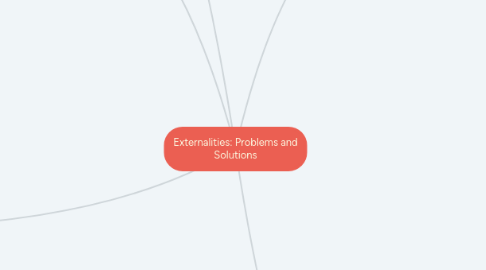
1. 5.3 Public-Sector Remedies for Externalities
1.1. Corrective taxation to discourage use
1.2. Subsidies to encourage use
1.3. Regulation to directly change use
2. 5.4 Distinctions Between Price and Quantity Approaches to Addressing Externalities
2.1. Multiple Plants with Different Reduction Costs
2.1.1. Quantity regulation
2.1.2. Quantity regulation
2.1.3. Quantity regulation with tradable permits
2.2. Uncertainty About Costs of Reduction
2.2.1. Implications for Instrument Choice
3. 5.5 Conclusion
3.1. Externalities arise when one party’s actions affect another party, and the first party doesn’t fully compensate the other for this effect.
3.2. Externalities are the classic answer to the “when” question of public finance: If externalities are present, then the market has failed and intervention is potentially justified.
3.3. This naturally leads to the “how” question of public finance. Two solutions:
3.4. Price-based measures (taxes and subsidies)
3.5. Quantity-based measures (regulation)
3.6. Which of these methods will lead to the most efficient regulatory outcome depends on factors such as the heterogeneity of the firms being regulated, the flexibility embedded in quantity regulation, and the uncertainty over the costs of externality reduction.
4. 5.1 Externality Theory
4.1. Externality
4.2. Market failure
4.3. Negative Externalities
4.3.1. Negative production externality
4.3.2. Negative consumption externality
4.4. Private and Social Marginal Cost
4.4.1. Private marginal cost (PMC)
4.4.2. Social marginal cost (SMC)
4.5. Private and Social Marginal Benefit
4.5.1. Private marginal benefit (PMB)
4.5.2. Social marginal benefit (SMB)
4.6. Externalities and Efficiency
4.6.1. Efficiency requires that SMC = SMB.
4.6.2. The market sets PMC = PMB.
4.6.3. When PMC = SMC and PMB = SMB, the market is efficient.
4.6.4. Production or consumption externalities lead to inefficiency.
4.7. Positive Externalities
4.7.1. Positive production externality
4.7.2. Positive consumption externality
4.8. Quick Hints
4.8.1. One aspect of the graphical analysis of externalities is knowing which curve to shift, and in which direction. There are four possibilities:
4.8.2. Negative production externality: SMC curve lies above PMC curve
4.8.3. Positive production externality: SMC curve lies below PMC curve
4.8.4. Negative consumption externality: SMB curve lies below PMB curve
4.8.5. Positive consumption externality: SMB curve lies above PMB curve
5. 5.2 Private-Sector Solutions to Negative Externalities
5.1. The Solution
5.1.1. Internalizing the externality
5.1.2. The Coase Theorem
5.1.2.1. Part I
5.1.2.2. Part II
5.1.3. Coasian Payments
5.1.3.1. Problem
5.1.3.1.1. The assignment problem
5.1.3.1.2. The holdout problem
5.1.3.1.3. The free rider problem
5.1.3.1.4. Transaction costs and negotiating problems

